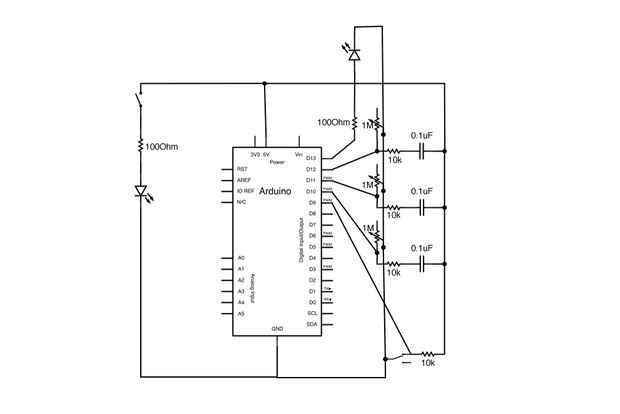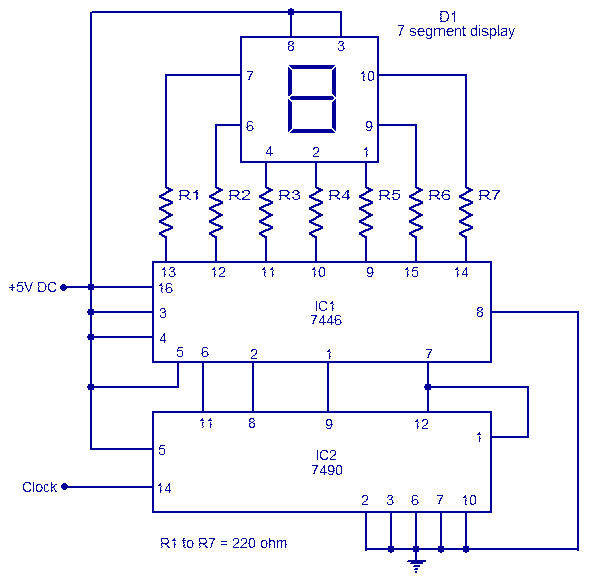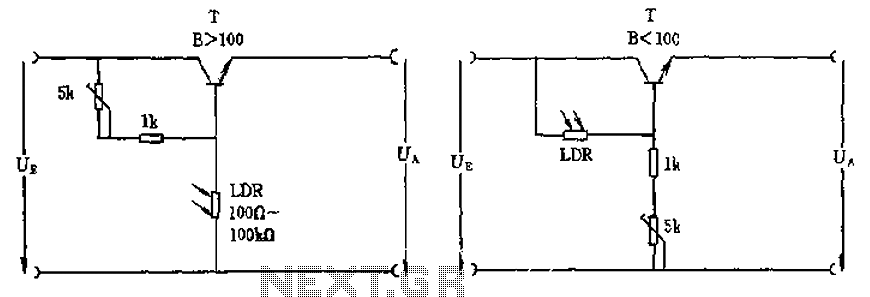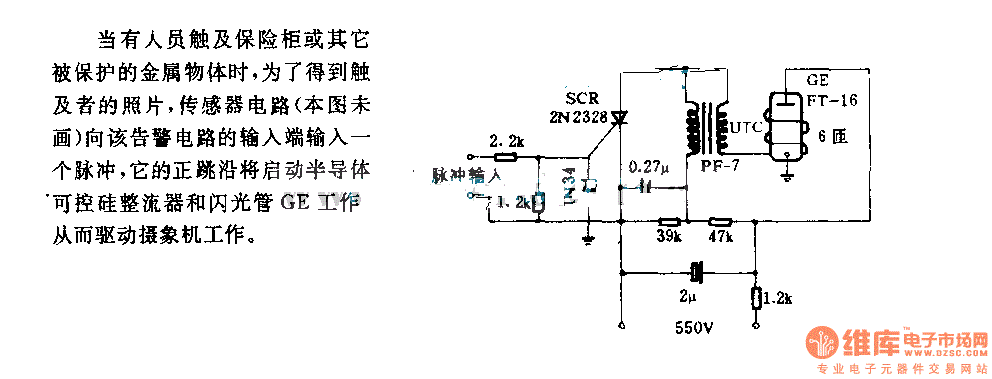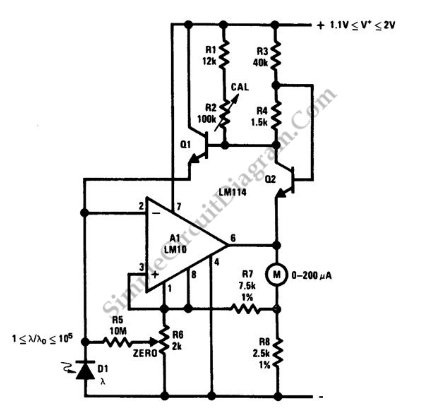
Decade resistor box

This device was designed to use two generic-patterned, pre-made, pre-drilled circuit boards that are available from Radio Shack, and other places. Parts consist of: two generic pre-etched and pre-drilled PCBs (printed circuit boards), 136 precision 1%, 1/2-Watt metal-film resistors (46 values), seven 1P10T rotary switches, seven knobs, two binding posts, wire, solder, drilled cast-aluminum or plastic case (7.5"x4.3"x2.4"), panel markings, and rubber feet. More: Parts list: (1) Circuit Board, 5 holes connected x 47 rows x 2 columns (Radio Shack 276-170) (1) Circuit Board, 3 holes connected x 25 rows x 2 columns (Radio Shack 276-150) (7) 1P10T Rotary Switches (Mouser 10YQ110 or other) (7) Knobs (Jameco 136240, or other) (2) Binding Posts (Jameco 77690 or other) (1) Case, 7.5" x 4.3" x 2.4" aluminum or plastic (Jameco 11973 or 18905, or other) (1) Wire, #22 (1) Solder (4) Rubber Feet, Adhesive (Jameco 119618, or other) (136) Resistors, 46 different values, 1%, 1/2-Watt, metal film (www.radioshack.com @ $0.05 ea): (25) 10 ohm (3) 15 ohm (1) 24 ohm (7) 39 ohm (1) 91 ohm (1 ea) 100 ohm, 1K, 10K, 100K (4 ea) 20 ohm, 200, 2K, 20K, 200K (4 ea) 30 ohm, 300, 3K, 30K, 300K (1 ea) 27 ohm, 270, 2.7K, 27K, 270K (1 ea) 18 ohm, 180, 1.8K, 18K, 180K (2 ea) 43 ohm, 430, 4.3K, 43K, 430K (1 ea) 47 ohm, 470, 4.7K, 47K, 470K (1 ea) 62 ohm, 620, 6.2K, 62K, 620K (5) 1 Megohm (20) 2 Megohm For the panel markings, you can create them in a Paint-type program, and print them onto clear (or other) peel-and-stick labels.
This device is structured around two pre-drilled printed circuit boards (PCBs), specifically designed for ease of assembly and flexibility in circuit design. The first PCB, designated Radio Shack 276-170, features a configuration of 5 holes connected across 47 rows and 2 columns, while the second PCB, Radio Shack 276-150, is configured with 3 holes connected across 25 rows and 2 columns. This dual-board setup allows for a comprehensive layout that can accommodate a variety of components and configurations.
The assembly comprises 136 precision metal-film resistors, each rated at 1/2 Watt and with a tolerance of 1%. These resistors cover a wide range of values, with 46 distinct resistance values included in the parts list. This variety enables precise control over the electrical characteristics of the circuit, making it suitable for applications that require fine-tuning of resistance.
A total of seven 1P10T rotary switches are included, which allow for multiple selectable inputs or outputs, enabling the user to configure the circuit for different operational modes or to select between various signal paths. Each rotary switch is paired with a knob for user-friendly operation.
The device also includes two binding posts for secure connections to external circuits or power supplies, ensuring reliable electrical contact. The use of #22 wire and solder facilitates robust connections between components, enhancing the overall durability of the assembly.
The entire assembly is housed within a case measuring 7.5 inches by 4.3 inches by 2.4 inches, which can be made from either cast aluminum or plastic, depending on the desired aesthetics and weight considerations. The inclusion of rubber feet ensures stability during operation and prevents slippage on surfaces.
For aesthetic and functional purposes, panel markings can be created using graphic design software and printed on peel-and-stick labels, allowing for customization and clarity in identifying controls and connections.
Overall, this device is designed for versatility and ease of use, making it suitable for various electronic projects or educational purposes where hands-on experience with circuit assembly is desired.This device was designed to use two generic-patterned, pre-made, pre-drilled circuit boards that are available from Radio Shack, and other places. Parts consist of: two generic pre-etched and pre-drilled PCBs (printed circuit boards), 136 precision 1%, 1/2-Watt metal-film resistors (46 values), seven 1P10T rotary switches, seven knobs, two binding posts, wire, solder, drilled cast-aluminum or plastic case (7.5"x4.3"x2.4"), panel markings, and rubber feet.
Parts list: (1) Circuit Board, 5 holes connected x 47 rows x 2 columns (Radio Shack 276-170) (1) Circuit Board, 3 holes connected x 25 rows x 2 columns (Radio Shack 276-150) (7) 1P10T Rotary Switches (Mouser 10YQ110 or other) (7) Knobs (Jameco 136240, or other) (2) Binding Posts (Jameco 77690 or other) (1) Case, 7.5" x 4.3" x 2.4" aluminum or plastic (Jameco 11973 or 18905, or other) (1) Wire, #22 (1) Solder (4) Rubber Feet, Adhesive (Jameco 119618, or other) (136) Resistors, 46 different values, 1%, 1/2-Watt, metal film (www.radioshack.com @ $0.05 ea): (25) 10 ohm (3) 15 ohm (1) 24 ohm (7) 39 ohm (1) 91 ohm (1 ea) 100 ohm, 1K, 10K, 100K (4 ea) 20 ohm, 200, 2K, 20K, 200K (4 ea) 30 ohm, 300, 3K, 30K, 300K (1 ea) 27 ohm, 270, 2.7K, 27K, 270K (1 ea) 18 ohm, 180, 1.8K, 18K, 180K (2 ea) 43 ohm, 430, 4.3K, 43K, 430K (1 ea) 47 ohm, 470, 4.7K, 47K, 470K (1 ea) 62 ohm, 620, 6.2K, 62K, 620K (5) 1 Megohm (20) 2 Megohm For the panel markings, you can create them in a Paint-type program, and print them onto clear (or other) peel-and-stick labels. 🔗 External reference
This device is structured around two pre-drilled printed circuit boards (PCBs), specifically designed for ease of assembly and flexibility in circuit design. The first PCB, designated Radio Shack 276-170, features a configuration of 5 holes connected across 47 rows and 2 columns, while the second PCB, Radio Shack 276-150, is configured with 3 holes connected across 25 rows and 2 columns. This dual-board setup allows for a comprehensive layout that can accommodate a variety of components and configurations.
The assembly comprises 136 precision metal-film resistors, each rated at 1/2 Watt and with a tolerance of 1%. These resistors cover a wide range of values, with 46 distinct resistance values included in the parts list. This variety enables precise control over the electrical characteristics of the circuit, making it suitable for applications that require fine-tuning of resistance.
A total of seven 1P10T rotary switches are included, which allow for multiple selectable inputs or outputs, enabling the user to configure the circuit for different operational modes or to select between various signal paths. Each rotary switch is paired with a knob for user-friendly operation.
The device also includes two binding posts for secure connections to external circuits or power supplies, ensuring reliable electrical contact. The use of #22 wire and solder facilitates robust connections between components, enhancing the overall durability of the assembly.
The entire assembly is housed within a case measuring 7.5 inches by 4.3 inches by 2.4 inches, which can be made from either cast aluminum or plastic, depending on the desired aesthetics and weight considerations. The inclusion of rubber feet ensures stability during operation and prevents slippage on surfaces.
For aesthetic and functional purposes, panel markings can be created using graphic design software and printed on peel-and-stick labels, allowing for customization and clarity in identifying controls and connections.
Overall, this device is designed for versatility and ease of use, making it suitable for various electronic projects or educational purposes where hands-on experience with circuit assembly is desired.This device was designed to use two generic-patterned, pre-made, pre-drilled circuit boards that are available from Radio Shack, and other places. Parts consist of: two generic pre-etched and pre-drilled PCBs (printed circuit boards), 136 precision 1%, 1/2-Watt metal-film resistors (46 values), seven 1P10T rotary switches, seven knobs, two binding posts, wire, solder, drilled cast-aluminum or plastic case (7.5"x4.3"x2.4"), panel markings, and rubber feet.
Parts list: (1) Circuit Board, 5 holes connected x 47 rows x 2 columns (Radio Shack 276-170) (1) Circuit Board, 3 holes connected x 25 rows x 2 columns (Radio Shack 276-150) (7) 1P10T Rotary Switches (Mouser 10YQ110 or other) (7) Knobs (Jameco 136240, or other) (2) Binding Posts (Jameco 77690 or other) (1) Case, 7.5" x 4.3" x 2.4" aluminum or plastic (Jameco 11973 or 18905, or other) (1) Wire, #22 (1) Solder (4) Rubber Feet, Adhesive (Jameco 119618, or other) (136) Resistors, 46 different values, 1%, 1/2-Watt, metal film (www.radioshack.com @ $0.05 ea): (25) 10 ohm (3) 15 ohm (1) 24 ohm (7) 39 ohm (1) 91 ohm (1 ea) 100 ohm, 1K, 10K, 100K (4 ea) 20 ohm, 200, 2K, 20K, 200K (4 ea) 30 ohm, 300, 3K, 30K, 300K (1 ea) 27 ohm, 270, 2.7K, 27K, 270K (1 ea) 18 ohm, 180, 1.8K, 18K, 180K (2 ea) 43 ohm, 430, 4.3K, 43K, 430K (1 ea) 47 ohm, 470, 4.7K, 47K, 470K (1 ea) 62 ohm, 620, 6.2K, 62K, 620K (5) 1 Megohm (20) 2 Megohm For the panel markings, you can create them in a Paint-type program, and print them onto clear (or other) peel-and-stick labels. 🔗 External reference
